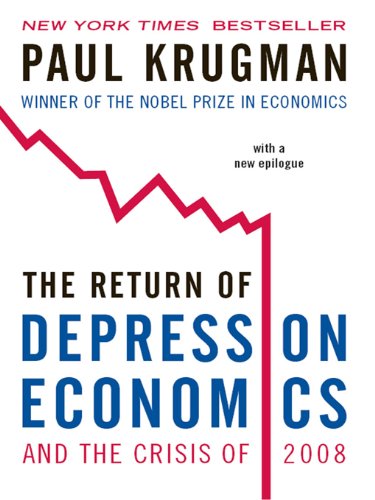Waste of a Nation: Garbage and Growth in India, Assa Doron and Robin Jeffrey, Harvard University Press, 2018, pp. 393, ISBN: 978-0-674-98060-0
“Why is India so filthy?”, asked the Ugly Indian, a masked man giving a TED Talk in Bengaluru. The anonymous man posed a question that has grappled many for over a century. Since at least the 19th century, the European writing on India has commented on stagnant cesspools, intense heat, accumulated refuse and dead carcasses on the streets. Moving on from the colonial times, V.S Naipul began his travelogue in the crowded streets of Mumbai, where dark and depressed looking people sit and eat in the dirt. Naipul notes that Indians “defecate everywhere”, the railways, the hills, the whole lot. Even Gandhi was annoyed at the fact that “we throw refuse out of our courtyard onto the street”. As beautiful a country as India is, it cannot escape being portrayed as filthy. To say nothing of the disgusting and racist stereotypes.
Doron and Jeffrey attempt to tackle this issue by way of answering the question of how, rather than why is India filthy. The authors begin by analyzing what waste actually is. Correctly, they show the multidimensionality of the concept by going beyond the mere notion of physical unwanted detritus. Indeed, waste is a product of the structuring capacities of culture and is therefore deeply enmeshed in the social and economic power relations and inequalities. As they state “waste is in the eye of the beholder” (p.5). The particularity of India’s relation to waste is found in its cultural prejudices regarding caste, gender, and class. Although it is important to note that this specificity is not unique to India, as for example, in Japan, the burakumin, still experience discrimination based on their involvement in tanning, leather, and death trades. Be that as it may, the cultural structuration in India leads to waste being associated with the Dalits, or lower castes, who are condemned by birth to manual scavenging and are confined to the lowest and most oppressed social positions. Although officially banned by the Constitution of 1950, the circular logic of untouchability remains entrenched in the social fabric where the Untouchables are impure based on the work they do, and the work they do do is because they are Untouchable.
The authors begin with the treatment of wet sewage. In 2017, most urban households did not have connections to sewers and cities did not have sewerage (sewer systems). Moreover, it has been reported that only 30 percent of human excreta is treated in the country (p.76). Historically, sewage was carried by pipes to nearby bodies of flowing water in which it was disposed to be carried further downstream and disintegrated in the process. However, with a significantly higher population now than in ancient times, this results in the pollution of rivers; Ganga and Yamuna being the prime exhibits. In fact, nearly 37000 million liters per day of untreated sewage water flows into the rivers of India (p.95). Then, there are the septic tanks which merely hold the excreta, from which contraptions such as the ‘honey-suckers’ suck out the waste and deposit it in nearby open fields. A testament to the fact that waste needs to be mobile and that it requires land. Diseases associated with such practices are plenty, of course, and include stunted growth of children. The infrastructural problems the authors analyze follow a circular logic, where underdevelopment leads to poor infrastructure which in turn leads to underdevelopment. While packed with data, the authors fail to provide an overview or a comment on the historical forces that structured Indian society. But perhaps that is a topic of a very different book.
Nowhere is the maxim that one person’s waste is another person’s treasure more true than in India. Doron and Jeffrey trace the process of value creation from waste by focusing on several objects/commodities: ships, hair, gold, electronics, plastic, paper, glass, and cloth. Regardless of the type of waste, the process of value creation inescapably follows what the authors call the pyramid of waste that represents the power relations in society. The rag pickers, manual scavengers, and waste collectors are usually the Dalits, or illegal Bangladeshi immigrants and poor Muslims. They are employed by the middle-men (kabaadiwalas), of higher social status, who rely on them to perform dangerous and laborious jobs for meagre pay. It is precisely at this stage that waste gains value; in the process of a Dalit woman, or a child, scavenging mountains of trash in one of India’s landfills to find plastic, paper, electronics or hair to sell. The collector amasses a large enough sum to sell to a wholesaler who then passes it on to the industry to be reintroduced into the economy. This is likewise the most dehumanizing task, with those collecting and sorting waste treated as waste themselves. Reports of verbal, physical and sexual abuse abound within the manual scavenging community. Nonetheless, none of the value created in the initial stages of recycling flows to the waste pickers themselves. The authors’ description of the value creation thus shows that the system of recycling can in itself reinforce the social and economic inequalities it rests on. The profits of a wig made out of premium Indian hair sold in the avenues of New York flow not to the Dalits.
A particularly moving story, one of many, is of Kamble, whose first thought upon being confronted with the massive fire that burned through the Deonar landfill in Mumbai in 2016 was not to escape it but to plunge right in it to try to save the gunny sacks of glass, plastic, and paper. Waste was Kamble’s only means of survival. Taking waste away from him was akin to taking away his only means of livelihood if it can be called that way. Economic liberalization of India paradoxically creates and threatens that same livelihood. As capitalist consumerism in India generates ever more waste, thus theoretically expanding the opportunities to scavenge, big businesses move into the increasingly profitable field and thereby dislocate the scavengers. Poor governance structures allow for corporate capture of government in the form of preferential public-private partnerships that exclude the scavengers.
What role for the State? Doron and Jeffrey take on the local governments and their limitations. While the 73rd and 74th amendment to the Constitution of 1950 spell out the provisions for creating local governments, their lack of funding and the fact that they are ultimately beholden to the State in which they are to be found leads to their ineffectuality. Bureaucratic and jurisdictional collusions further ensure that little gets done with regards to public sanitation and waste management. It is in fact because of the manual scavengers that something does get done. Their work acts as a substitute for the ineffectual government. Them and the ‘facilitators’ in the form of the various NGOs, who according to authors, “hold some of the most promising models for containing mushrooming waste” (p.235). Organizations such as Chintan, aim to organize and legalize waste pickers and thereby offer them recognition and dignity. Kagad Kach Patra Kashkatari Panchayat, or the KKPKP, the trade union that brings together waste pickers, itinerant waste buyers, waste collectors, and other informal recyclers, helps these workers obtain loans, education and offer better futures to their children. In other words, there are alternative models that bring hope, to the authors at least.
Waste of a Nation is packed with data and heart wrenching anecdotes. It certainly focuses on the social inequalities that are generated by and themselves generate waste. However, the authors’ analysis gives the impression that the problem of waste is merely attitudinal. The authors prescribe that India must re-define its relationship with waste and that dignity ought to be extended to waste-pickers. The waste pyramid of value does not rely solely on psychological foundations but on concrete socio-economic ones as well, as the authors’ narrative outlined. Is it not then logical to demand that the socio-economic structures that facilitate waste relations be altered in order to meaningfully address the issue of waste? Various conclusions can be drawn from the authors’ analysis, which is at one and the same time the strength and the weakness of the book. Waste of a Nation offers a vast amount of data, but the conclusions are left for the reader to determine.




